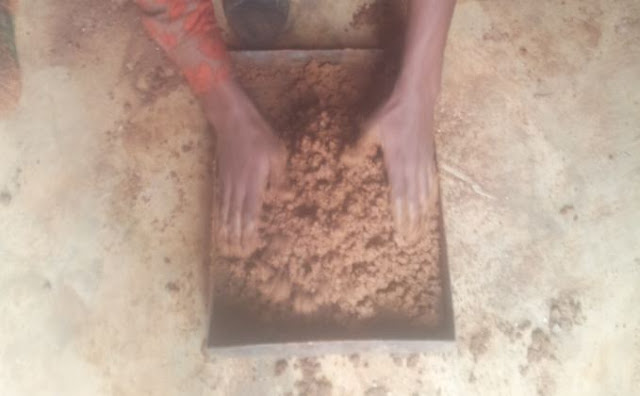INDEX PROPERTIES OF SOIL
You can ask
yourself what is the index properties of soil? Is it helpful to know the index
properties of soil?
The answers of above questions can be answered as
described below
INDEX PROPERTIES OF SOIL
These are properties of soil which are not primary
interest to Geotechnical Engineers but which are indicative of the engineering
properties of soil, these properties of soil have nothing to be used in
design but they are helpful in one way or another.
The following are examples of index properties of
soil which can be indicative of engineering properties of soil.
1. Specific
gravity
Specific gravity of soil (G) is ratio of density of soil to
density of standard material (water).
Specific gravity of soil help geotechnical engineers to know the
porosity of soil and to predict whether the soil will be stable to support the
structure and allow proper drainage.
2. In-situ
bulk density
This is the density of undisturbed
soil (soil with its water content) from site, in situ bulky density can
indicate the porosity and compaction of soil, bulk density considers both the solids and the
pore space (that covered by both air and water).
For example the bulk density- 1960kg/m3 the soil is strong than the soil with bulk density-1260.
For example the bulk density- 1960kg/m3 the soil is strong than the soil with bulk density-1260.
3. Water
content
This
is the amount of water found in the soil, this property of soil can also used
to give an overview on porosity, strength, permeability of soil.
The
amount of water that the soil can hold defines the size of particles that the
soil has, due to the fact that the soil with fine particles holds more water
for a time and has high capillarity (allow water to rise from underlying
layers).
For example when water content 20% the soil is sand, water content 40% the soil is clay.
For example when water content 20% the soil is sand, water content 40% the soil is clay.
4. Relative
density
Relative density is the measure of compactness of cohesionless soil. Relative density or density index is the ratio of the difference between the void ratios of a cohesionless soil in its loosest state and existing natural state to the difference between its void ratio in the loosest and densest states.
Determination of relative density is helpful in evaluating compaction state of coarse grained soils and also assessing the safe bearing capacity in case of sandy soils.
5. Particle
size distribution
This
is the one of soil classification method which classifies the soil according to
their size, this involves determining the percentage by weight of soil
particles in different size ranges, and particle size distribution is done sieve
analysis or hydrometer analysis
From
Particle size distribution, here we can find the coarseness and fines of the
soil particles. By knowing the coarseness and fines of soil particles can bring
the following view on the provided soil as follows.
ü Coarse-grained
soils have good load-bearing capacities and good drainage qualities, and their strength and volume-change characteristics are not
significantly affected by changes in moisture conditions.
ü Fine-grained soils have poor load-bearing
capacities and poor drainage qualities, and their strength and volume-change characteristics are
significantly affected by changes in moisture conditions.
6. Consistency limits
Consistency of soil id the degree of firmness of the soil in relation to water content that a soil contains, the soil consistency is described in the following states liquid state, plastic state, semi solid state and solid state.
This help to know the strength of soil materials to hold together themselves also resistance of soil to deformation and rupture.
"You can comment below what you think are advantages of knowing well index properties of soil."
"Is this post helpful to you? how? you can comment below."




Excellent. Thanks for all your work in creating/sharing so much new material with us!
ReplyDeleteI'm looking forward to more.
Punch Mitts